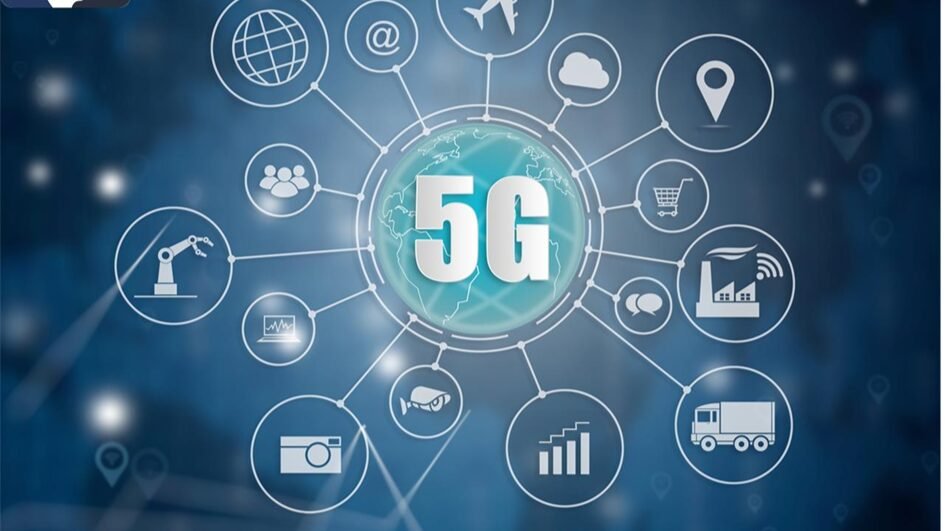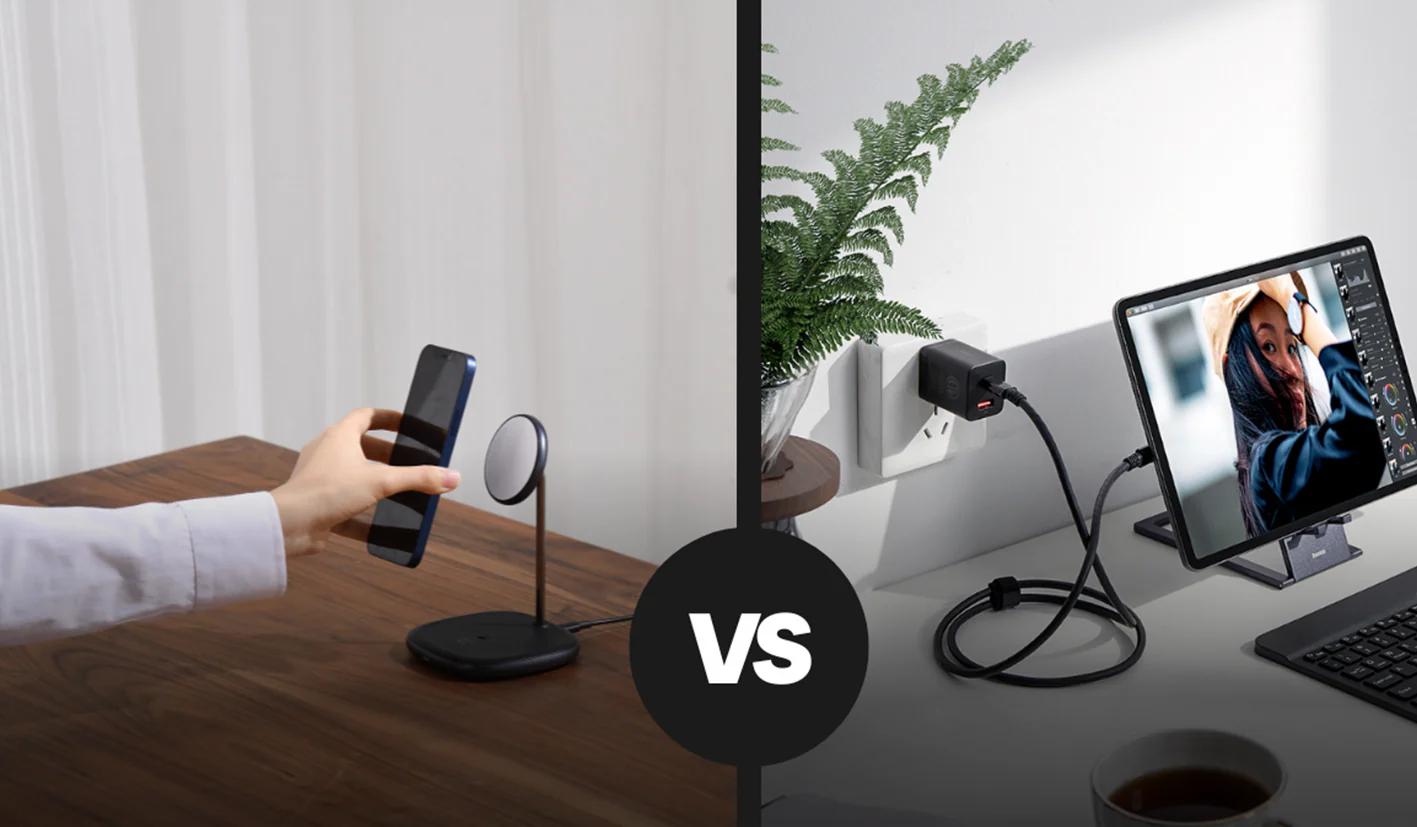Tech
5G and Beyond: How Next-Gen Wireless Connectivity Is Shaping Communities and Businesses

The Age Of Next-Gen Wireless Networks
Wireless technology has dramatically evolved over the past decade, redefining the modern landscape for businesses and communities. The arrival of 5G and emerging wireless standards means data can move faster than ever, latency is reduced to milliseconds, and networks can support a much higher density of devices without losing reliability. The practical impact of these changes is significant—a hospital can receive real-time updates from hundreds of monitoring devices. In contrast, a manufacturing plant can synchronize robots on opposite sides of the facility. Organizations are quickly adapting to this new era, and commercial wireless solutions are being deployed to ensure that this digital backbone supports everything from cloud applications to public Wi-Fi in parks.
The shift from traditional connections to advanced wireless touches nearly every facet of life. This technological transformation is not just about convenience—it is a platform for new business models, more innovative public infrastructure, and improved emergency response. As 5G continues to roll out, industries as wide-ranging as logistics, healthcare, education, and entertainment are finding creative ways to realize the benefits of high-capacity, ultra-low-latency networks. Constant advances in wireless deployment have started reshaping possibilities, from automated vehicles in city centers to mobile clinics delivering care in remote areas.
Business Benefits: Adapting To A Smarter World
Today’s businesses depend on next-generation wireless for communication and as a lever for radical transformation and efficiency gains. With a robust wireless network, real-time inventory systems can update stock levels automatically whenever an item is moved or sold. Logistics companies utilize sensor networks that track shipments across continents, while customer services teams can connect with clients from virtually anywhere, thanks to reliable streaming and cloud-based applications.
How Wireless Connects Teams and Customers
- Advanced video meetings, team chat, and file sharing work smoothly across all devices, whether employees are in the office, at home, or on the move.
- Retail stores are adopting digital payment systems and loyalty apps that offer seamless checkout experiences and push targeted promotions to mobile devices.
- Physical security is enhanced with real-time feeds from cameras and intrusion sensors, enabling instant alerts and remote monitoring.
- Digital signage and wayfinding services powered by up-to-the-moment analytics help companies better engage and direct visitors within their spaces.
These evolving capabilities make businesses more competitive and create more flexible, adaptive teams. The trend of hybrid and remote work is supported by stable wireless infrastructure, ensuring vital business data and communications remain protected and responsive, no matter where employees are located.
Transforming Communities With Connectivity
Cities and towns are on the frontlines of wireless innovation. In public spaces, wireless networks enable public Wi-Fi hotspots, surveillance cameras for improved safety, and intelligent lighting systems that adjust brightness based on pedestrian activity. Smart trash bins signal when they need to be emptied, saving city resources and improving streets. Neighborhood sensors can detect air pollution, notify residents, and even trigger action plans for local authorities.
Examples of Smart City Integration:
- Apps offering live updates on traffic, bus arrivals, and subway schedules benefit residents and commuters, improving everyday mobility and reducing wait times.
- Environmental monitors track temperature, humidity, and particulate matter, alerting local communities to hazardous conditions.
- Street infrastructure and municipal operations—like water mains and streetlights—are centrally managed, improving response times to outages and maintenance needs.
These improvements help create safer, more energy-efficient urban environments, and better use public resources—all possible because of the underlying strength of next-generation wireless platforms.
Bridging The Digital Divide
Despite the above advances, millions of households still lack reliable high-speed connections. The digital divide particularly affects rural communities and low-income neighborhoods, where expanding broadband can be complicated by geography, cost, and infrastructure gaps. As classrooms go virtual and telehealth grows more common, these disparities risk leaving vulnerable populations even further behind.
To close this gap, public policies and private investment are needed to build infrastructure, lower prices, and support device accessibility. Initiatives focused on affordable connections and device lending programs are starting to make a difference, but continued commitment and innovation are necessary. The expansion of high-speed internet coverage and the promotion of digital literacy are crucial. This ensures that all communities can equally benefit from advancements in wireless technology, creating opportunities in education, entrepreneurship, healthcare, and more.
Security In A Wireless Future
As the number of connected devices explodes, so does the landscape of potential threats. Cyber attackers increasingly target less-secure endpoints, looking for unpatched software or risky configurations. Businesses and individuals must be vigilant, adopting network-level protection, encryption, and up-to-date security practices as foundational elements rather than afterthoughts.
A successful security strategy includes more than technology—it involves regularly updating systems, providing employee training, and preparing response plans for potential breaches. As wireless technology becomes the core of critical operations, rigorous data protection and compliance with privacy regulations are mandatory for building trust with customers and stakeholders. Choosing technology partners who prioritize security and transparency can help organizations manage risks at every growth stage.
Applications Across Industry Lines
- Healthcare: Medical professionals depend on secure, low-latency networks for video consultations, remote diagnostics, and transmitting sensitive health data quickly and accurately. Wireless-connected wearables and sensors enable proactive treatment and better patient care.
- Manufacturing: Robots and production line equipment use wireless links for real-time monitoring, predictive maintenance, and automation, driving quality improvements and reducing downtime.
- Education: Schools use videoconferencing, virtual classrooms, and interactive lessons to engage students remotely, a trend intensified by the pandemic and likely to remain popular because of its accessibility.
- Entertainment: Gaming, augmented and virtual reality, and streaming platforms flourish thanks to ultra-fast connections, enabling richer, more immersive experiences without interruptions or data bottlenecks.
Each sector uses next-gen wireless differently, but they all share a common goal: harnessing connectivity to innovate, serve, and thrive in a digital-first landscape.
Challenges And Next Steps
The road to universal wireless adoption is far from simple. Infrastructure upgrades are necessary yet expensive, with regulatory challenges and environmental reviews sometimes delaying progress. Coordinating across public and private organizations, balancing investment needs, and navigating zoning rules or community concerns all influence the speed of deployment.
For real momentum, stakeholders must maintain active communication, engaging with residents, business owners, technology experts, and policymakers. Transparency about where towers are placed, how networks impact the environment, and what data is collected is essential for fostering public trust and accountability. A balanced and thoughtful approach will enable communities and companies to realize the promise of next-generation wireless without unintended consequences.
Looking Ahead: Preparing For What’s Next
With 5G still expanding, the horizon includes research into forthcoming 6G standards and other advanced networking technologies. These new frontiers offer even greater speed, reliability, and connectivity for applications not yet imagined—potentially connecting autonomous vehicles, advanced robotics, and mixed reality worlds in real time.
Staying ahead means consistently monitoring news and breakthroughs in wireless connectivity, investing in upgradable infrastructure, and embracing a lifelong learning mindset for employees and leadership alike. Cultivating technical skills, digital literacy, and cyber-awareness will ensure businesses and communities thrive as connectivity transforms how people live and work today and in the future.
Tech
Heat, Humidity, and the Hidden Life of a Drone Battery

There’s a certain joy in sending a drone skyward on a bright, clear morning. Smooth air, endless views, maybe a quick shot of the coastline or the outback stretching beyond sight. But behind every flight—whether it’s recreational or part of a professional gig—sits something less glamorous but far more critical: the RC battery for drone.
It’s not flashy. It doesn’t get the attention the camera does. Yet it’s the one piece of tech that decides whether you get 25 minutes of reliable flight… or a stressful scramble to land before power cuts. The story gets more complicated. Heat. Humidity. A climate that doesn’t always play nice with lithium chemistry.
Why Every Region Is Different
Here’s the thing. Batteries don’t live in a vacuum. They react to their environment more than people realise. A battery for drone that behaves perfectly in cool, dry climates might act entirely differently here.
Take the northern tropics—sticky, humid, unpredictable. Moisture creeps into everything. Electronics, connectors, even storage cases. Down south? Dry heat and sudden temperature swings. Neither is great for a lithium pack. Cells expand, efficiency dips, and lifespan shrinks faster than expected.
So when someone asks, “How long does a battery for drone last?”—the honest answer is, it depends where you’re flying.
Heat: The Silent Enemy
You know that sinking feeling when you’ve left your phone in the car on a hot day, and it’s almost too warm to hold? Now imagine that scenario, but with a high-discharge pack designed to power a flying machine.
That’s exactly what happens with a battery for drone under summer conditions. Heat accelerates chemical breakdown inside the cells. Voltage sag becomes more noticeable. You might get fewer minutes in the air before the drone forces an emergency landing. And if it’s extreme? Swelling. That puffy, slightly rounded shape that’s a dead giveaway it’s time to retire it.
The frustrating part? Most of the damage is invisible until it’s too late.
Humidity: The Sneaky Culprit
Humidity doesn’t get as much attention, but it should. A battery for drone doesn’t like dampness. Moisture can sneak into casings, corrode connectors, and weaken insulation. Over time, the risk isn’t just shorter lifespan—it’s safety.
In coastal regions, especially, salt in the air adds another layer of trouble. Leave a pack sitting in a shed near the beach and you’ll find out fast. Contacts tarnish, performance dips, and suddenly that “fully charged” pack isn’t delivering what it should.
Habits That Make or Break a Drone Battery
Of course, climate isn’t the whole story. How you treat your packs matters just as much. Some habits that quietly kill a battery for drone:
- Charging it straight after a flight while it’s still hot.
- Storing it at full charge for weeks (or worse, completely flat).
- Tossing it in a car boot on a summer afternoon.
- Using cheap knock-off chargers instead of a proper balance charger is a common mistake.
And the good habits? Those are simple, too. Give it time to cool before charging. Store at “storage voltage” (most modern chargers have that mode). Keep them in a cool, dry place, ideally a fireproof LiPo bag or case. Little rituals that seem tedious but, over months, mean your battery for drone keeps delivering.
Professional Services: Why They Matter
If you’re just flying for fun, you might not think much about professional servicing. But for drone operators in agriculture, construction, or filmmaking, downtime is expensive. A faulty battery for drone could mean missing a client’s shot or delaying a survey.
That’s why drone services increasingly offer battery maintenance and diagnostics: some run capacity tests, cycle counts, and even disposal programs. Because once a pack starts degrading, it doesn’t just affect flight time—it can risk the safety of the drone itself.
And speaking of disposal…
Don’t Toss It in the Bin
This one can’t be stressed enough. A battery for drone isn’t something you throw out with household rubbish. Damaged lithium packs are a fire hazard. In some states, there are drop-off points specifically for batteries. Others allow recycling through electronic waste centres.
The bottom line? Do the responsible thing. Retire old packs safely, and you’ll avoid fires, fines, and a guilty conscience.
The Future Looks Brighter (and Cooler)
The good news? Battery tech isn’t standing still. Smart batteries now come with built-in management systems that monitor temperature, cycles, and charge. Some even self-discharge to storage voltage if you forget. Where heat and humidity are constant battles, this is more than just convenience—it’s peace of mind.
And as research continues, lighter chemistries and more resilient cells are on the horizon. Meaning the battery for drone you buy in a few years might last longer, charge faster, and laugh in the face of a 35°C day. Well, maybe not laugh. But at least holds up better than what we’re used to.
Wrapping It Up
At the end of the day, a battery for drone isn’t just another accessory. It’s the core of every flight. With its wild swings in weather and often unforgiving climate, it demands more attention than most people give it.
Look after it. Respect the heat. Don’t ignore the humidity. And when in doubt—lean on local services for testing, maintenance, or disposal. Do that, and your drone’s battery from RC Battery will last longer. It’ll give you the kind of dependable flights that make this hobby—or this profession—worth it.
Because in the air, reliability isn’t optional. It’s everything.
Gaming
How Tech Innovations Shape Modern Online Gaming

Digital transformation is pushing online gaming into new shapes, often faster than expected. AI, blockchain, VR, and interactive design are shifting from buzzwords to everyday tools. Coast Reporter notes that over 65% of new online gaming titles now use at least one advanced technology, up from about 30% in 2021—a clear turning point.
And it’s more than a fresh coat of paint. It changes how players move through games, how systems pay out, and how the entire experience feels. Much of the safety, fairness, and tuning now relies on automated or even decentralized tools. If this momentum holds, online play in 2025 could look very different from 2015—which, after all, is the whole point.
AI takes personalization and security to new heights.
Artificial intelligence is reshaping online casino, sometimes subtly, sometimes very directly. Platforms lean on machine learning for recommendations, tailored bonuses, even small interface nudges that appear in the moment. The claim is that by late 2023, roughly 72% of surveyed platforms had analytics powered by AI to watch trends and adjust lineups on the fly. Bespoke lobbies, custom promos, adjusted odds that respond to preference patterns, all of that is showing up more often.
On the safety side, AI is being asked to watch for trouble. Systems flag irregular playing bursts or early signs that someone might be slipping into harmful patterns. Some operators trigger prompts or time-outs, and occasionally account locks, before losses stack too high. Facial recognition and behavioural checks also aim to tighten verification and cut down on fraud. The net effect, when it works, is a more personal path through the lobby that feels safer, a bit more engaging, and frankly harder to game. As the targeting improves, trust tends to follow, although not everyone will love every nudge.
Blockchain makes gaming fair and transparent.
Blockchain technology and digital currencies are rapidly recasting how online operations manage fairness and security.
Provably fair gaming, once talked about more than used, is edging toward the default on a growing slice of blockchain-led platforms. Players can check outcomes on a public ledger, which can quiet the usual doubts about hidden levers behind the curtain.
Digital coins like Bitcoin and Ethereum smooth deposits and payouts. Faster movement, often lower fees, and less reliance on traditional banking make access feel broader. Smart contracts help too. Jackpots and winnings can be executed automatically, which tends to reduce disputes and keep rules consistent. The Nation Nigeria reports that nearly 40% of new online platforms now support crypto and smart contracts. If adoption keeps up, blockchain may shift from novelty to expectation, though it will likely be uneven across regions.
Immersive play and interactive design reshape experiences.
Virtual reality and augmented reality keep stretching what an online gaming session can feel like. VR hubs build out lavish digital rooms where people walk in, sit down, chat, and play from the sofa. CSEJ.org counted more than 120 fresh VR environments by early 2024, aimed at players who want something more interactive than spinning a plain slot. AR, working over the real world, layers guides and mini-games into live spaces, which younger audiences seem to find appealing.
Design is shifting in the classics, too. Card games and roulette bring in touchscreens, 3D flair, and sometimes a storyline that branches. A few titles even lean into skill-like moments, which gives players a bit more agency. For many under 35, that crossover between video games and wagering lowers the barrier. It feels familiar, but not the same, a hybrid that keeps inching forward.
Regulation and mobile trends enhance accessibility.
Technology keeps pushing regulators to rethink the rulebook. With VR tables, live dealer streams, and decentralised finance tools, oversight teams are revisiting language, licenses, and security baselines. Coast Reporter notes that in 2024 alone, at least seven national authorities updated policies to include virtual currencies and immersive formats. That is a brisk pace, at least for policy.
Mobile keeps climbing. Instant access to live dealers, tournaments, and rewards is becoming an expectation rather than a perk. Operators respond with AI-driven checks for age, spending, and risk signals to stay within legal rails. Better connectivity and hardware have pulled in new groups of players. The gap between desktop and phone use looks set to narrow further, though habits vary by market.
Responsible gambling remains essential.
The new tools bring plenty of excitement, but the basics still matter. AI is now central to wellness monitoring, looking for patterns before they cause harm. Self-exclusion and education are easier to reach inside apps and web dashboards. Regulators and operators talk a lot about transparency and protection, and some of that emphasis seems genuine, some of it pragmatic. The next wave of online gaming may be steered by code and sensors and data, yet the aim remains pretty clear: keep it safe enough, fair enough, and, ideally, still fun.
Tech
Wireless Phone Charger vs Wireless Charging Station: Which One Should You Choose in 2025?

In today’s tech-driven lifestyle, convenience and efficiency are everything. One of the best innovations in recent years is the wireless phone charger, which removes the need for messy cables and fragile charging ports. At the same time, the wireless charging station has become a must-have for people who use multiple devices daily. But which one is right for you? This guide breaks it down.
What is a wireless phone charger?
A wireless phone charger is designed to charge your smartphone without the need for cables. Simply place your device on the charging pad or stand, and it begins to power up instantly. Most modern smartphones support Qi wireless charging, making these chargers widely compatible.
Benefits of using a wireless phone charger
- Convenience: No more plugging and unplugging cables.
- Durability: Prevents wear and tear on charging ports.
- Style: Sleek designs fit well on desks, nightstands, or workspaces.
Why choose a wireless charging station?
If you own multiple gadgets, a wireless charging station may be a smarter choice. Instead of using separate chargers for each device, one hub can power everything from your smartphone to your smartwatch and wireless earbuds.
Advantages of a wireless charging station
- Multi-device support: Charge phones, watches, and earbuds at once.
- Decluttered setup: Keeps your desk or nightstand neat.
- Travel-friendly: Carry one station instead of multiple chargers.
Key features to look for
When shopping for a wireless phone charger or a wireless charging station, consider these essential features:
1. Charging speed
Fast charging support (10W or higher) ensures your phone powers up as quickly as with wired chargers.
2. Compatibility
Ensure the charger supports your phone model and other gadgets. A good wireless charging station should handle multiple devices with ease.
3. Design and build quality
Look for anti-slip pads, sturdy construction, and compact sizes for travel.
4. Safety features
Overheating protection, surge protection, and foreign object detection keep your devices safe.
5. Portability
A foldable wireless phone charger works well on the go, while a larger station fits best at home or the office.
Best use cases
Choosing between a wireless phone charger and a wireless charging station depends on your lifestyle.
- Wireless Phone Charger: Perfect for individuals who primarily charge one device. Great for quick access on desks or nightstands.
- Wireless Charging Station: Ideal for families or tech enthusiasts with multiple devices. Keeps everything organized and charged at the same time.
Myths about wireless charging
Although wireless charging is popular, some myths hold people back. Let’s clear them up:
- “Wireless charging is too slow.”
Today’s chargers offer fast-charge capabilities comparable to wired options. - “It damages battery health.”
A quality wireless phone charger regulates power flow, keeping batteries safe. - “It only works without cases.”
Many chargers work perfectly through slim or medium phone cases.
Tips to maximize efficiency
To get the most out of your wireless phone charger or wireless charging station, follow these tips:
- Use the right power adapter for maximum charging speed.
- Keep the surface clean to prevent dust from interfering with power transfer.
- Avoid overheating by placing the charger in a ventilated area.
- Choose reliable brands for better durability and safety.
The future of wireless charging
The future of charging technology is exciting. Soon, wireless charging stations may power devices without direct contact. Researchers are working on long-distance wireless charging that allows multiple gadgets in a room to charge automatically.
Imagine walking into your living room and your phone, earbuds, and smartwatch start charging without being placed on a pad. While still in development, this technology shows how far we’ve come from traditional wired solutions.
Final thoughts
Whether you choose a wireless phone charger or a wireless charging station, both options offer incredible convenience. A single charger is great for everyday personal use, while a charging station is the ultimate solution for multi-device households or professionals.
Investing in wireless charging not only declutters your space but also future-proofs your lifestyle as technology continues to evolve. In 2025 and beyond, these devices represent the future of power simpler, faster, and entirely cable-free.

 Blog9 months ago
Blog9 months agoHow to Deal with Scabies While Traveling

 Travel9 months ago
Travel9 months agoRichmond, Virginia Street Art Guide

 Travel9 months ago
Travel9 months agoPerhentian Islands: How to Get There, What to Expect, & More

 Travel9 months ago
Travel9 months agoHow to Live in Your Car in New Zealand

 Travel9 months ago
Travel9 months agoVegan Guide to Dining Out in Richmond, Virginia

 Travel8 months ago
Travel8 months agoSouvenir in Nepal: A Guide to Unique Handicrafts and Cultural Treasures

 Food8 months ago
Food8 months agoVegetarian Food Nepal: A Journey into Flavorful Plant-Based Cuisine

 Travel6 months ago
Travel6 months agoA Local’s Guide to Sanibel Island, Florida















